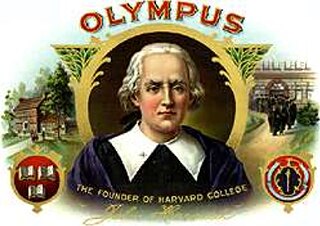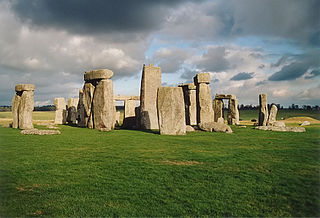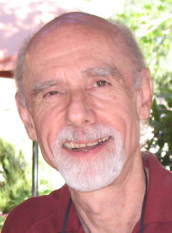
The Rehoboth Carpenter family is an American family that helped settle the town of Rehoboth, Massachusetts in 1644. [1]

The Rehoboth Carpenter family is an American family that helped settle the town of Rehoboth, Massachusetts in 1644. [1]
The first immigrant and founder of this line was William Carpenter (generation 1) (b. c1575 in England), his namesake son, William Carpenter (Generation 2) (c. 1605 in England -1658/9 Rehoboth, Bristol, MA), and the son's wife and children (then numbering four) arrived on the Bevis from Southampton, England, in 1638. Nothing more is known of the father, William (Gen. 1), in Massachusetts and he is presumed to have perished either in passage, shortly after arriving in the new world or, less likely he returned to England. William Carpenter (Gen. 2) is buried in the Newman Congregational Church Cemetery with a simple field stone marked with a "W. C.". [2]
William Carpenter, (Gen. 2) first appears in New England records in 1640, as a resident of Weymouth, Massachusetts. He was among the founders (at Weymouth in late 1643) of the Plymouth Colony town of Rehoboth (settled 1644). His son, William (Gen. 3) Carpenter (b. 1631 in England - 1702/3 Rehoboth, Bristol, Massachusetts), was for many years Rehoboth town clerk, by virtue of which his name—not that of his father—appears with some frequency in Plymouth Colony records, in association with a number of local vital-records lists that he certified and forwarded to colony authorities. The name William Carpenter appears in copious Plymouth Colony records and in the writings of John Winthrop and in other public records over the generations. [3]
Three Carpenter family houses in Rehoboth are listed on the U.S. National Register of Historic Places: Christopher Carpenter House, Col. Thomas Carpenter III House, and Carpenter House.

These Carpenters previously lived in Shalbourne, an English parish near Hungerford that straddled the boundary between Wiltshire and Berkshire. The Rehoboth Carpenters' English origins were obscure until the discovery of Bishops' Transcripts of Shalbourne parish records containing marriage, baptismal, and burial records pertaining to them. Among these records is that of William (Gen. 2, a.k.a. Senior) Carpenter's marriage in 1625 to Abigail Briant of Shalbourne. A search of Westcourt Manor tenants' records reveals William Carpenter (Gen. 1) as a copyholder at Westcourt Manor in Shalbourne from 1608 to late 1637. [2]
William Carpenter (Gen. 1) born about 1575 in England. He died after 2 May 1638 (Bevis passenger list) and certainly before 1644 when his son, William settled in Rehoboth. He was of Newtown, Shalbourne Parish, Wiltshire, England, by 1608, when he became a copyholder (semipermanent leaseholder) at Westcourt Manor (Westcourt Recs 7). Shalbourne, completely in Wiltshire since 1895, previously it straddled the line separating Wiltshire and Berkshire, with Westcourt comprising the Wiltshire part of the parish (Shalbourne Map); the Hampshire border was/is about four miles away. It is likely that William was born in one of these three counties. William's renewal of his Westcourt tenancy on 22 June 1614 gives his age as 40 (Westcourt Recs 7). The passenger list of the Bevis, the ship on which he left England, is dated 2 May 1638 and states William's age as 62 leading to an estimate of about 1575 for his birth. [4]
His son William Carpenter (Gen. 2) was born about 1605 in or of Wiltshire, England. He died 7 February 1658/1659 in Rehoboth, Bristol, Plymouth Colony. He married Abigail Briant, daughter of John & Alice, on 28 April 1625 in Shalbourne Parish, Berkshire, now in, Wiltshire, England. [5]
Their children:

There is no record to confirm it, but it is said that certain Rehoboth Carpenters were among the founders of the Rehoboth (now Newman) Congregational Church (See: Newman Congregational Church and the Newman Cemetery) [6] [7]
This much we know: William (Gen. 2) Carpenter's admission as a Massachusetts Bay Colony freeman from Weymouth in 1640 required church membership. The minister at Weymouth was Rev. Samuel Newman, most of whose congregation accompanied him to Rehoboth, where he was also the minister. William (Gen. 2) Carpenter was one of Rehoboth's fifty-eight original proprietors and is buried in Old Rehoboth (Newman Church) Cemetery. (While records of the time provide no direct evidence as to the religious affiliation of William (Gen. 2) Carpenter of Rehoboth, he was certainly not a Baptist, even though other Carpenters in New England were. In this regard, he is sometimes confused with William Carpenter (Rhode Island colonist) of Providence and others. [8] [9]
Through his five sons, Capt. William Carpenter became known as the father of "The Family of Heroes." Over 300 of his male lineal descendants served America in the Revolutionary War, more than any other American family.[ citation needed ]
William Carpenter (Rhode Island colonist), son of Richard Carpenter of Amesbury was a reportedly a first cousin of William Carpenter of Rehoboth, son of William Carpenter of Shalbourne, England. In addition he supposedly was closely related to Alexander Carpenter of Wrington, Somersetshire, and Leiden, Netherlands, of whom his four married daughters were in the Plymouth Colony in the early 1620s. This derives from Amos B. Carpenter’s [2] unsupported claim that Richard of William of Shalbourne, and Alexander Carpenter were brothers. No genealogical evidence has been found even hinting at a link between the Wrington Carpenters, on the one hand, and either of the other two afore-mentioned families, on the other; a connection is highly improbable. Traditional genealogical research methods provide good reasons to doubt also that Providence William and Rehoboth William were closely related. [15]

Nathaniel Eaton was an Anglican clergyman who was the first Headmaster of Harvard, President designate, and builder of Harvard's first College, Yard, and Library, in 1636.
Thomas Willett was a Plymouth Colony fur trader, merchant, land purchaser and developer, Captain of the Plymouth Colony militia, Magistrate of the colony, and was the 1st and 3rd Mayor of New York, prior to the consolidation of the five boroughs into the City of New York in 1898.

Shalbourne is a village and civil parish in the English county of Wiltshire, about 3 miles (4.8 km) southwest of Hungerford, Berkshire. The parish has a number of widely spaced small settlements including Bagshot and Stype, to the north, and Rivar and Oxenwood to the south. Before 1895, about half of the parish of Shalbourne lay in Berkshire.

John Billington was an Englishman who travelled to the New World on the Mayflower and was one of the signers of the Mayflower Compact. He was also the first citizen of the Plymouth Colony to be convicted of murder and executed.
Samuel Newman was a clergyman in colonial Massachusetts whose concordance of the Bible, published first in London in 1643, far surpassed any previous work of its kind.
William Arnold was one of the founding settlers of the Colony of Rhode Island and Providence Plantations, and he and his sons were among the wealthiest people in the colony. He was raised and educated in England where he was the warden of St. Mary's, the parish church of Ilchester in southeastern Somerset. He immigrated to New England with family and associates in 1635. He initially settled in Hingham in the Massachusetts Bay Colony, but he soon relocated to the new settlement of Providence Plantation with Roger Williams. He was one of the 13 original proprietors of Providence, appearing on the deed signed by Roger Williams in 1638, and was one of the 12 founding members of the first Baptist church to be established in America.
Benajah Carpenter was a founding member of the United States Army Field Artillery Corps under Henry Knox and veteran of the Siege of Boston and Battle of Long Island.

Edmund Rice, was an early settler to Massachusetts Bay Colony born in Suffolk, England. He lived in Stanstead, Suffolk and Berkhamsted, Hertfordshire before sailing with his family to America. He landed in the Colony in summer or fall of 1638, thought to be first living in the town of Watertown, Massachusetts. Shortly thereafter he was a founder of Sudbury in 1638, and later in life was one of the thirteen petitioners for the founding of Marlborough in 1656. He was a deacon in the Puritan Church, and served in town politics as a selectman and judge. He also served five years as a member of the Great and General Court, the combined colonial legislature and judicial court of Massachusetts.

William Carpenter was a co-founder of Rhode Island and Providence Plantations, born about 1610, probably in Amesbury, Wiltshire, England. He died September 7, 1685, in the Pawtuxet section of Providence, now in Cranston, Rhode Island. He was listed by 1655 as a "freeman" of the colony.
Robert Abell was born in about 1605 in Stapenhill, Derbyshire, England. He emigrated to New England in 1630 as part of the first wave of the Great Migration, and was among the early settlers of the Massachusetts Bay Colony, settling first in Weymouth, and subsequently in Rehoboth, where he died on June 20, 1663.
Martha Wadsworth Brewster was an 18th-century American poet and writer. She is one of only four colonial women who published volumes of their verse before the American Revolution and was the first American-born woman to publish under her own name.

Richard Sears was an early settler of New England who lived in both the Massachusetts Bay Colony and Plymouth Colony.
Obadiah Holmes was an early Rhode Island settler, and a Baptist minister who was whipped in the Massachusetts Bay Colony for his religious beliefs and activism. He became the pastor of the Baptist Church in Newport, Rhode Island, a position he held for 30 years.
Richard Austin (1598–1645) was an early puritan colonist who landed in Boston Harbor, Massachusetts on 16 May 1638 on board a ship called the Bevis. He was the immigrant paternal English ancestor and great-great-great-grandfather of Stephen F. Austin, empresario, considered the "Father of Texas" and founder of Texas.
Robert Titus was the first Titus immigrant from England to America and is the progenitor of many of the Tituses in America today. After living 19 years in Brookline, Weymouth and Rehoboth, Titus was warned out of Massachusetts in 1654; and moved to Long Island.

Henry Samson In 1620 Henry Samson travelled as a member of the Edward Tilley family on the historic voyage of the Pilgrim ship Mayflower. The Tilleys died in the first winter but Henry Samson survived to live a long, fulfilling life in Plymouth Colony.

Samuel Wilbore was one of the founding settlers of Portsmouth in the Colony of Rhode Island and Providence Plantations. He emigrated from Essex, England to Boston with his wife and three sons in 1633. He and his wife both joined the Boston church, but a theological controversy began to cause dissension in the church and community in 1636, and Wilbore aligned himself with John Wheelwright and Anne Hutchinson, signing a petition in support of dissident minister Wheelwright. In so doing, he and many others were disarmed and dismissed from the Boston church. In March 1638, he was one of 23 individuals who signed a compact to establish a new government, and this group purchased Aquidneck Island, then known as "Rhode Island", from the Narragansett Indians at the urging of Roger Williams, establishing the settlement of Portsmouth.
John Winslow (1597–1674) was one of several Winslow brothers who came to the Plymouth Colony in its earliest years. His brothers Edward and Gilbert were passengers on the Mayflower in 1620. John Winslow was a passenger on the Fortune in 1621, and two other brothers, Kenelm and Josiah, also settled in New England, arriving before 1632. The Winslow family were involved in all aspects of the Plymouth Colony, producing in the 17th century several governors and making their mark in New England history in both government and business.
The Bevis, also known as the Bevis of Hampton, was a merchant sailing ship that brought "Emigrants" from England to New England in 1638, this at a time when thousands of Puritans left England seeking freedom of religious practice.

Eugene Cole Zubrinsky is an American genealogist focusing on colonial southern New England families. He is a Fellow of the American Society of Genealogists and lives in Ojai, California.